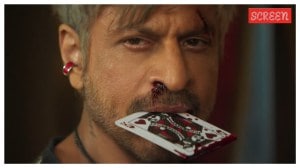Grameen Bank: Bangladeshs rich cricketing hinterland
A small-town revolution is sweeping the national team,just as it did in India during the last decade.
Rubel Hossain says that had he not played cricket for Bangladesh,he would be working in some Dubai construction company,most likely repairing toilets. The 21-year-old pacer is the son of a fisherman from the coastal district of Bagerhat,which is anything but a cricketing hotspot.
But the notion of cricketing hotspots in Bangladesh might be a thing of the past. A small-town revolution is sweeping the national team,just as it did in India during the last decade with the advent of the Dhonis and Munafs.
Bangladeshs team at the World Cup contains a number of cricketers from the hinterland. Raquibul Hasan hails from Jamalpur,while Imrul Kayes is from Kushtia a town in western Bangladesh more known as a place Rabindranath Tagore spent part of his life in. Skipper Shakib Al Hasan is from Magura,Naeem Islam from Gaibandha and Mushfiqur Rahim and Shafiul Islam from Bogra. These towns and hamlets are scattered around Bangladeshs peripheries,far from the capitals relatively well-entrenched cricketing structures.
Against the odds
Most of these cricketers came from impoverished backgrounds. Kayes first bat was fashioned by his father,while Shafiul,the son of a grocer,couldnt afford a ball and practiced alone,bowling with stones. When Raquibuls father went to watch his son playing for his country,he carried along a packed tiffin,in order to avoid spending money at the stadium. He didnt have a ticket and wasnt allowed in till he spotted a Bangladesh Cricket Board official and told him who he was.
Rubel ignored his father Siddiquis stern injunction to focus on his studies,and with the surreptitious consent of his mother Rubijan,who hid his cricketing activities from her husband ran off to play football and cricket with his friends. Initially,he was a batsman. I used to score hundreds and no one could get me out. Pace bowling just happened and I started off with taped tennis balls, he says.
His springboard to proper cricket came in the form of a national-level pace hunt in Dhaka to which he travelled ticketless on the roof of a bus. In his first trial he clocked 72 mph,which was too slow to be selected. The next year,Rubel came again and bowled at 82 mph,which opened the doors for him to fulfill his dreams.
One has to give credit to the talent hunt programme that happened here. It has given us bowlers like Rubel and Shafiul, says former Bangladesh captain Akram Khan.
Apart from spotting these talents and giving them an opportunity in competitive cricket,the BCB provided them scholarships to further their careers. Moving from my small town to Dhaka was not easy. I didnt know how I would make a living. Thankfully BCBs scheme helped me concentrate on cricket, says Rubel.
A number of players have also benefitted from the Bangladesh Krira Shikkha Protishtan (Bangladesh Institute of Sports). Apart from the central premises located 45km from Dhaka,the Institute also has five regional centres in the divisions of Rajshahi,Chittagong,Khulna,Barishal and Sylhet.
Shakib might have been lost to football his first love had BKSPs coaches not spotted the southpaw at a local tournament. Naeem Islam also trained at the Institute,as did Mushfiqur,Raquibul and Suhrawadi Shuvo.
Big bucks
Akram Khan says that the small town revolution began when Bangladesh ascended to Test status. Cricket was still popular in the late 90s but it got more followers when people saw that it is a source of income,and can be a career. After Bangladesh got Test status,cricket spread to remote areas of the country, he says. The feats of Rubel and co. could accelerate this process even more. Until I had taken my early strides in cricket,people never thought that this can actually be a career, says Rubel. Now,my house in Bagerhat becomes a mini-stadium when Bangladesh play.
- 01
- 02
- 03
- 04
- 05





























